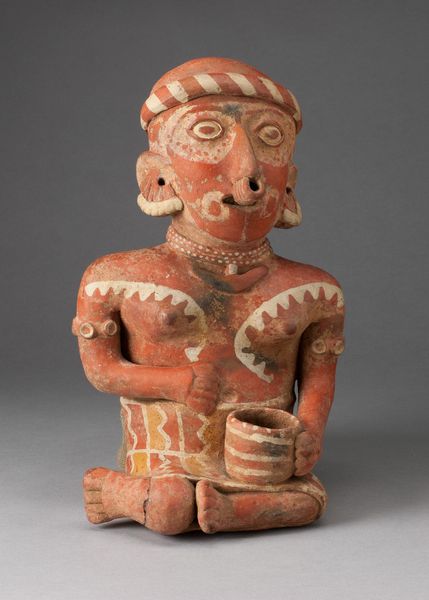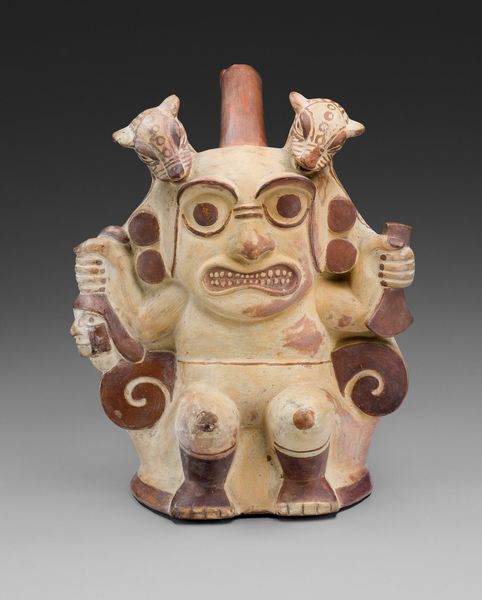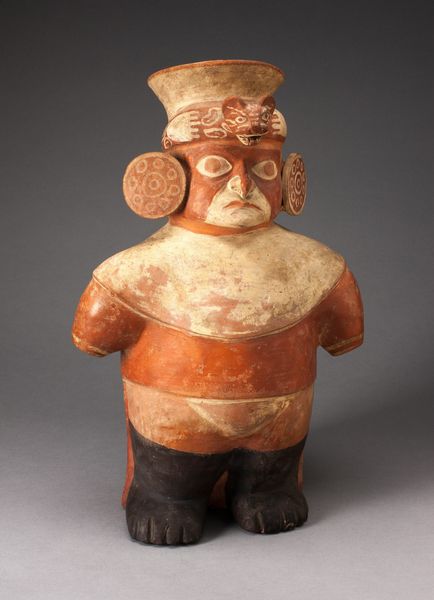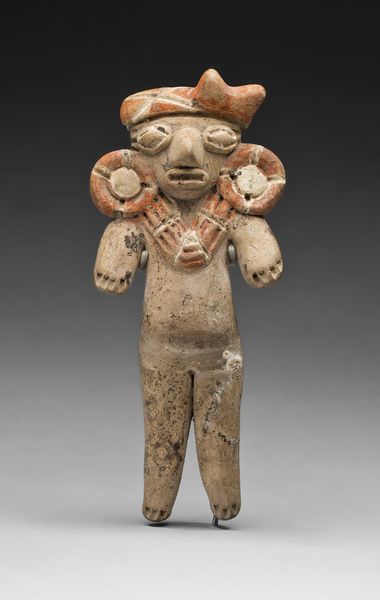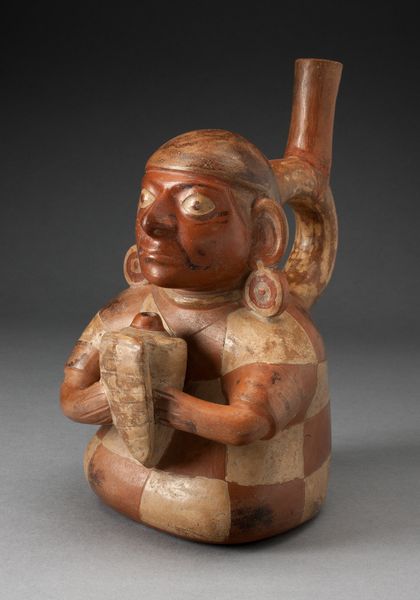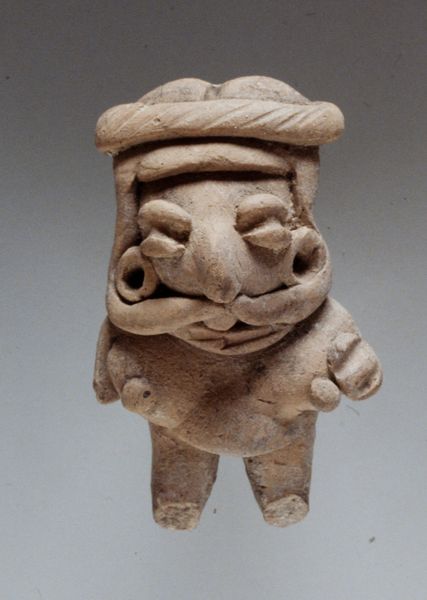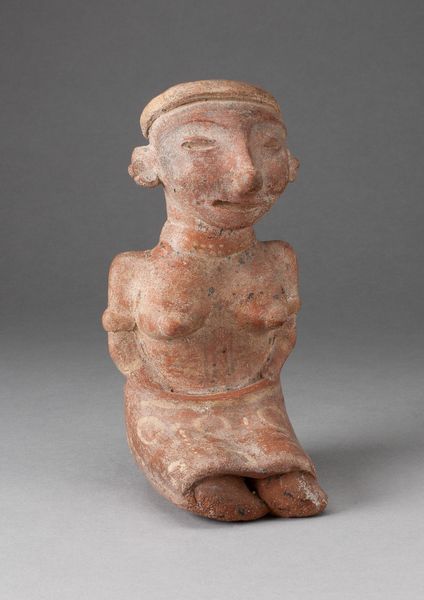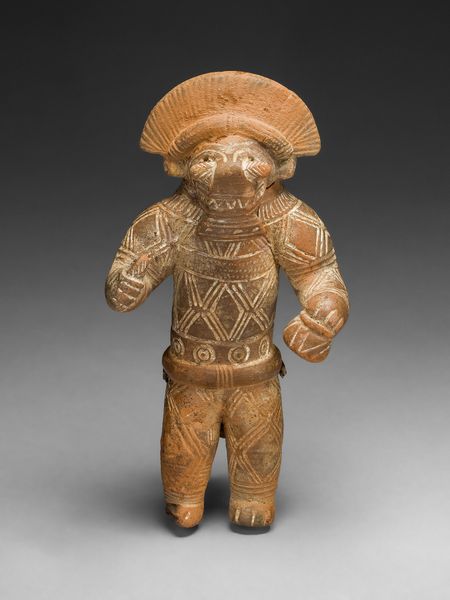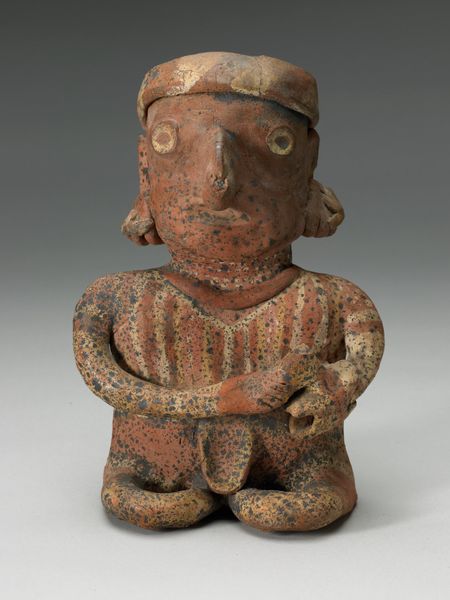
ceramic, earthenware, sculpture
#
ceramic
#
figuration
#
earthenware
#
sculpture
#
indigenous-americas
Dimensions: H. 17.8 cm (7 in.)
Copyright: Public Domain
Curator: Standing before us, we have a captivating piece entitled "Figure of a Standing Warrior." Created sometime between 600 and 900 AD by the Nopiloa peoples, this sculpture, fashioned from ceramic and earthenware, offers a glimpse into their world. Editor: The immediate impact is striking! The material gives a warm, earthy feel. Those deeply set eye holes create a feeling of both power and… emptiness? It’s really unsettling, in a compelling way. Curator: Indeed. We must consider that objects like this were not viewed simply as ‘art,’ but integral parts of a belief system, reflecting their social hierarchy. Depictions of warriors often signified strength and protection, central to maintaining community structure. The figure is quite elaborately decorated too; each element must have held symbolic meaning for the community that created it. Editor: And how are museums handling that narrative now? Contextualizing power dynamics, gender representation, who gets remembered and why? Are we decolonizing the warrior myth, complicating simple stories of strength and triumph? That patterned armor, for example - it’s beautiful but evokes, for me, not only warrior strength but complex issues of class, societal roles, and probably control of resources. Curator: The museum definitely strives to. Acknowledging colonial histories that impact how these pieces arrive in museums, shifting from object-based narratives to those centered on people and original meaning. For instance, that ‘armor’ you noticed also tells us much about status within Nopiloa society and possible trade networks of the time. This earthenware sculpture probably figured prominently in certain rituals, perhaps used in elite contexts associated with militaristic or power-asserting events. Editor: It definitely provides plenty to think about! Seeing a warrior figure from so long ago and in such detail invites reflections on how communities construct power, display social identities, and create collective memory. It’s interesting to observe and challenge all the connotations that still arise even today. Curator: Exactly! These kinds of indigenous American pieces bridge time. By thoughtfully studying them, museums can promote not only art-historical understanding but foster critical self-reflection.
Comments
No comments
Be the first to comment and join the conversation on the ultimate creative platform.

